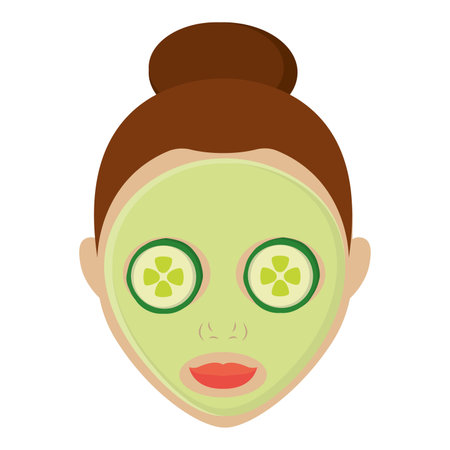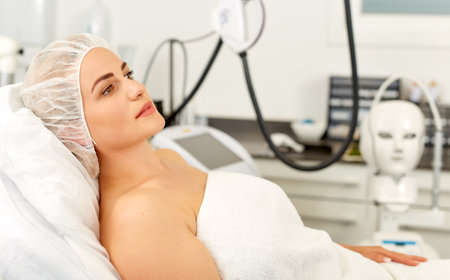Understanding Your Skin Type
If you’re tired of constantly reapplying makeup or touching up your skin throughout the day, building a solid at-home skincare routine is key. But before you stock up on the latest trending products, it’s important to start with the basics: understanding your unique skin type. Everyone’s skin has different needs, and what works for your favorite influencer might not actually deliver results for you. Take time to observe how your skin feels in the morning and at night—is it oily, dry, combination, or sensitive? Pay attention to how your skin reacts after cleansing or applying certain products. Identifying these patterns will help you select products and routines that truly work for you, cutting down on the need for frequent touch-ups. Don’t just follow trends—focus on what your skin actually needs, so you can create a personalized routine that keeps your complexion looking fresh and balanced all day long.
2. Building a Consistent Cleansing Routine
If you want to cut back on those constant skin touch-ups, nailing your cleansing routine at home is the first big step. Let’s be real—proper cleansing isn’t just skincare 101; it’s the foundation for everything else you put on your face. Skipping this, or doing it wrong, can leave behind oil, makeup, and grime that sabotage your glow (and make you reach for concealer all day long).
Why Cleansing Correctly Is Non-Negotiable
Cleansing does more than just remove dirt—it helps balance your skins natural oils, prevents breakouts, and ensures any serums or moisturizers actually absorb instead of sitting on top of clogged pores. In American culture, with our fast-paced days and love for makeup, sweat-proof sunscreen, and city pollution, not washing up right means youre basically inviting problems like dullness or irritation.
How to Choose the Right Cleanser for Your Lifestyle
Your cleanser should fit both your skin type and daily habits. Are you a morning runner? Do you wear full glam makeup or just SPF? Here’s a quick guide to help you pick:
| Lifestyle/Skin Goal | Recommended Cleanser Type | Why It Works |
|---|---|---|
| Active (workouts/sweat) | Gel or foaming cleanser | Removes sweat & oil without stripping skin |
| Heavy makeup user | Cleansing balm or oil (followed by gentle wash) | Dissolves makeup fully; double cleanse keeps pores clear |
| Sensitive/dry skin | Cream/milk cleanser | Mild formulas avoid irritation and lock in moisture |
| Minimalist/no makeup | Micellar water or gentle hydrating wash | Cleanses lightly while preserving natural barrier |
| Oily/acne-prone | Salicylic acid or charcoal cleanser | Targets excess oil & helps prevent breakouts |
Real-Life Tips for Sticking With It
- Make it routine: Set your cleanser out by your sink so you never “forget.” Consistency is key.
- Avoid hot water: Lukewarm is best—hot water strips away healthy oils fast.
- No harsh scrubs daily: Exfoliate only 1-2 times a week if needed. Overdoing it can irritate and cause more issues.
- If in doubt, patch test: Especially with new cleansers—your skin will thank you later.
The Bottom Line?
A solid cleansing routine tailored to your lifestyle means less buildup, fewer unexpected breakouts, and way less time spent fixing things throughout the day. Put in the work upfront and watch how little you need to touch-up later!

3. Hydration and Moisturizing Hacks
If you’re tired of your skin feeling dry or your makeup fading before lunchtime, hydration is your new best friend. Americans are always on the go, so finding easy, effective ways to keep your skin plump and glowing at home can make all the difference. First things first: don’t underestimate drinking enough water. It sounds basic, but staying hydrated from the inside out keeps your skin looking fresh and less prone to flakiness or dullness.
For your actual skincare routine, layer a lightweight hydrating serum—think hyaluronic acid—right after cleansing. Follow up with a moisturizer that fits your skin type; if you’re oily, go for a gel-based formula, and if you’re dry, reach for something creamier. One smart consumer trick? Apply your moisturizer while your skin is still slightly damp to lock in extra moisture. This hack really helps avoid that midday tightness that makes you want to pile on more product.
Lastly, don’t skip SPF in the morning—even indoors! Many Americans forget this step, but it seals in your routine and protects against UV rays sneaking through windows (yes, really). Investing in a humidifier for your bedroom can also help maintain hydration overnight, so you wake up less likely to need a quick fix. Keeping these simple hydration habits at home means fewer touch-ups during the day—and more confidence in your natural glow.
4. At-Home Exfoliation: Do’s and Don’ts
If you’re tired of constantly touching up your skin or dealing with dullness, exfoliation can be a game-changer—when done right. Exfoliating at home is convenient and effective for maintaining smooth, glowing skin, but it’s easy to go overboard. Here’s how to get the most out of exfoliation without risking irritation or damage.
The Right Way to Exfoliate at Home
Exfoliation helps remove dead skin cells and unclog pores, making your skin look fresher and helping other skincare products work better. But not all exfoliators—or routines—are created equal. Here’s a quick guide to what works best for different skin types:
| Skin Type | Recommended Exfoliant | Frequency |
|---|---|---|
| Sensitive | Gentle enzyme-based or lactic acid exfoliants | 1x/week |
| Oily/Acne-Prone | BHA (salicylic acid) or clay masks | 2x/week |
| Normal/Combination | AHA (glycolic acid) or mild scrubs | 1-2x/week |
| Dry/Mature | Creamy, hydrating exfoliants or low-strength AHAs | 1x/week |
Do’s for Safe Exfoliation at Home
- Patch Test New Products: Always test on a small area before using a new exfoliant on your whole face.
- Follow Instructions: Overusing chemical or physical exfoliants can strip your skin barrier—stick to recommended frequency.
- Hydrate After Exfoliating: Apply a soothing moisturizer or serum to replenish moisture post-exfoliation.
- Sunscreen Is Non-Negotiable: Freshly exfoliated skin is more sensitive to UV rays, so SPF is a must every morning.
Don’ts That Can Set You Back
- Avoid Over-Exfoliating: More isn’t better—it can lead to redness, flaking, and even breakouts.
- No Harsh Scrubs: Skip gritty physical scrubs, especially if you have sensitive or acne-prone skin; they can cause microtears.
- Don’t Mix Too Many Actives: Using multiple acids or retinoids with exfoliants can trigger irritation—keep it simple.
- No Exfoliation on Broken Skin: Hold off if you have cuts, sunburn, or active breakouts—let your skin heal first.
The Bottom Line: Less Is More for Long-Term Glow
Smooth, healthy-looking skin doesn’t mean scrubbing daily. Consistent but gentle exfoliation helps extend the life of your glow between professional treatments—and saves you from unnecessary touch-ups. Listen to your skin and adjust your routine as needed; sometimes skipping an exfoliation session is exactly what your skin needs most.
5. Sun Protection as a Daily Habit
If there’s one thing Americans are truly passionate about in skincare, it’s sun protection—and for good reason. SPF isn’t just a beach-day essential; it’s become a non-negotiable step in daily routines across the U.S. Why? Because consistent sun protection is key to preventing premature aging, dark spots, and even skin cancer. By making SPF part of your at-home routine, you’re setting yourself up for fewer touch-ups and healthier-looking skin long term.
Why the SPF Obsession?
Americans have seen the science: unprotected sun exposure leads to fine lines, wrinkles, hyperpigmentation, and, most seriously, increased cancer risk. With so much focus on maintaining youthful skin and avoiding costly corrective treatments, applying sunscreen daily just makes sense. It’s not about paranoia—it’s about prevention and making smart choices that pay off down the road.
Making Sun Protection Fit Your Life
We get it—life is busy, and you don’t want another complicated step in your morning rush. Good news: sun protection doesn’t have to be high-maintenance. Look for lightweight facial moisturizers with broad-spectrum SPF 30 or higher, so you can hydrate and shield your skin in one go. For makeup lovers, choose foundations or tinted moisturizers with added SPF for effortless coverage.
Easy Ways to Remember
Keep your SPF product next to your toothbrush or coffee maker as a visual cue—if you see it, you’ll use it. For those who spend time outdoors throughout the day, stash a small sunscreen stick in your bag or car for quick touch-ups on-the-go (especially around the nose and cheeks). And don’t forget about lips and hands—these often-overlooked areas need protection too!
By making SPF application as automatic as brushing your teeth, you’ll not only reduce your chances of sun damage but also minimize the need for frequent concealer touch-ups or emergency anti-aging fixes later on. That’s real self-care that actually saves you time—and money—in the long run.
6. Targeted Treatments and Boosters
If you want to cut down on those last-minute touch-ups, knowing when and how to use targeted treatments is a game-changer. Instead of piling on extra products every time your skin acts up, focus on smart, intentional additions like serums, masks, or spot treatments. The trick is not to overwhelm your routine—just address the issues as they come up.
Serums: Your Power Players
Serums are the heavy hitters in at-home skincare. They’re packed with active ingredients that go deep, whether you’re fighting dark spots, breakouts, or fine lines. If your skin is looking dull or you notice specific problem areas, add a serum that targets those concerns right after cleansing and before moisturizing. You don’t need a dozen—just pick one or two that really fit your needs.
Masks: The Weekly Reset
Masks aren’t an everyday thing (unless you love the ritual), but once or twice a week can give your skin that extra boost. Clay masks are great for oily zones, while hydrating masks help dry patches bounce back. Treat masking like a Sunday reset rather than a daily chore—it’s about quality over quantity.
Spot Treatments: Precision Overload
Got a pimple popping up? Don’t overhaul your whole routine—just dab on a spot treatment where you need it. This keeps your overall routine simple and prevents irritation from too many actives all over your face.
Bottom line: Layering targeted treatments into your at-home regimen doesn’t have to be complicated or time-consuming. Pick what addresses your main concerns and resist the urge to do it all every day. That way, you’ll actually need fewer fixes—and fewer touch-ups—in the long run.
7. Lifestyle Choices that Support Healthy Skin
If you want your at-home skincare routine to really pay off and cut down on those last-minute touch-ups, looking beyond just the products you use is key. Your daily habits—what you eat, how much you sleep, and how you handle stress—play a huge role in how your skin looks and feels. Here are some straightforward tips anyone can start with, designed for real life (and real results):
Simple Diet Tweaks
You don’t need a fancy meal plan to see improvement in your skin. Focus on drinking enough water throughout the day, since dehydration makes fine lines and dullness more obvious. Try to include more fruits and veggies—think berries, oranges, spinach, and carrots—for their antioxidants and vitamins. Cut back on processed foods, excess sugar, and greasy takeout when possible; these can trigger breakouts or leave your complexion looking tired. If you’re a coffee lover, that’s fine—but balance it with extra water to keep your skin hydrated.
Prioritize Quality Sleep
We’ve all heard about “beauty sleep,” but it’s the real deal. When you regularly get 7-9 hours of quality shut-eye, your skin has time to repair itself. This means less puffiness, fewer dark circles, and an overall brighter look that doesn’t require concealer fixes every morning. Establish a bedtime routine that helps you wind down—maybe swap scrolling through your phone for reading or listening to calming music before bed.
Manage Stress Effectively
Stress isn’t just tough on your mind—it can show up as breakouts or inflammation on your face too. While nobody lives a totally stress-free life, simple actions like short walks outdoors, guided breathing exercises, or even five minutes of journaling can make a difference. When you manage stress better, your skin gets less reactive—and that means fewer surprise blemishes needing emergency cover-ups.
The Bottom Line
Healthy lifestyle choices don’t have to be overwhelming or expensive. By making small adjustments to what you eat, prioritizing rest, and finding simple ways to cope with stress, you’ll amplify the effects of your at-home skincare routine—and spend way less time worrying about quick fixes before heading out the door.


